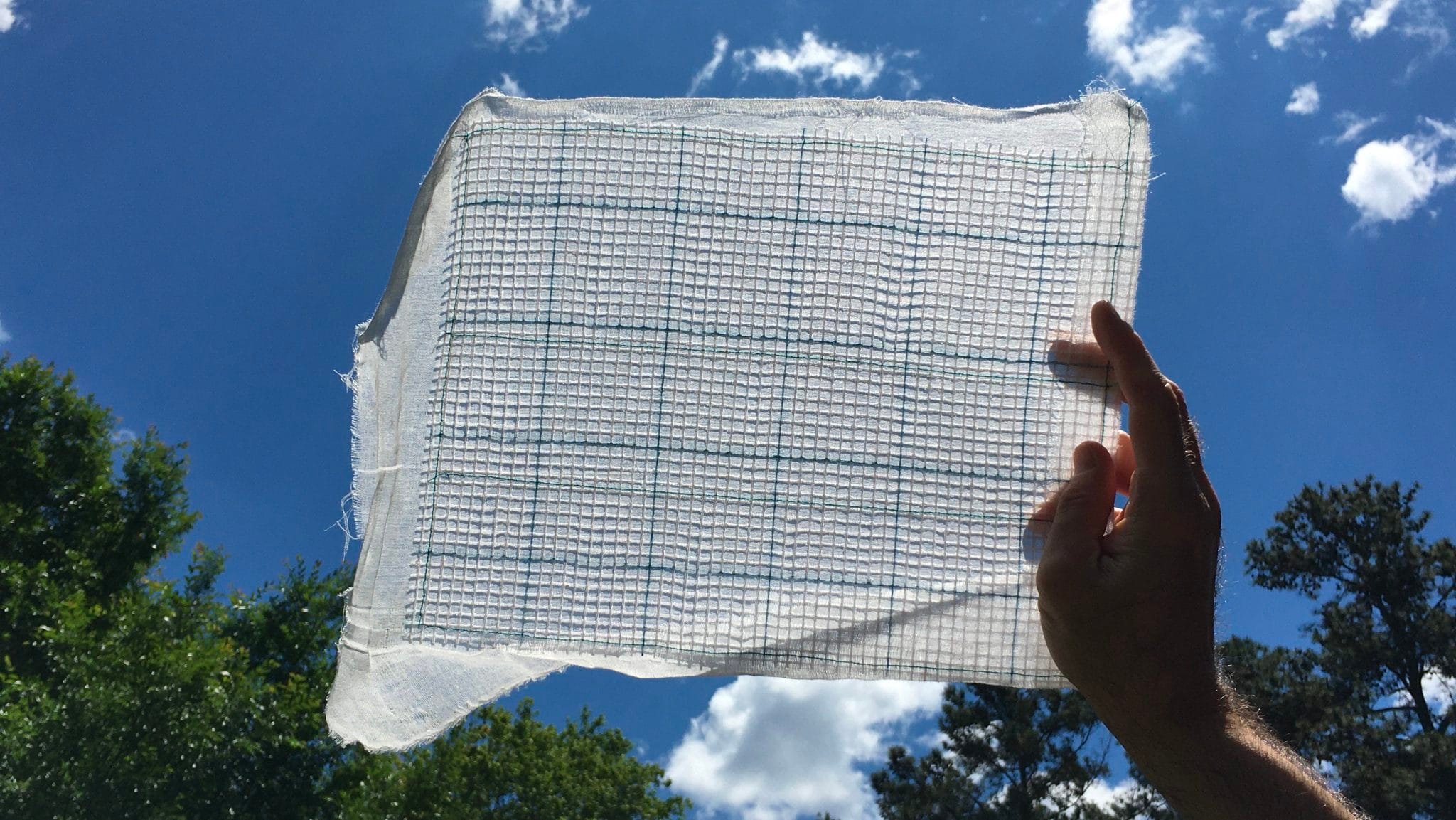

When you think of climate change-fighting technology, your first thought might be glittering solar panels or futuristic vehicles that run without combustion. But some of the most important pieces of eco-friendly tech are relatively understated.
One of the biggest problems to solve is what to do about all the carbon dioxide spewed by fossil fuel plants. Loads of ideas have come about on how to capture and sequester carbon dioxide from both the air and from energy production, with mixed reviews. The latest notion is that the fix could be as simple as a revved-up piece of cotton cloth.
Using a cotton textile and an enzyme called carbonic anhydrase—which exists in the human body and helps us regulate carbon dioxide—North Carolina State University’s Jialong Shen and Sonja Salmon created a piece of fabric that can effectively scoop up and capture emissions. They published their new findings in the journal ACS Sustainable Chemical Engineering earlier this month.
The material is wrapped into a roll which is then put inside a tube, almost like wet paper towels inside of a glass funnel. As leftover gas from fossil fuel production seeps in through the bottom, the carbonic anhydrase works to convert the carbon dioxide and water into bicarbonate. A mix of water and bicarbonate then drips out of the funnel, and can be used to create more energy or reacted with calcium to create limestone.
[Related: Tech to capture and reuse carbon is on the rise. But can it help the world reach its climate goals?]
“We chose cotton deliberately because it can carry a lot of water and can spread the water out into a really thin film,” says Salmon, an associate professor of textile engineering, chemistry and science at NC State. “That allows the gas to react or interact very closely with the water.”
The material was able to capture 52.3 percent of carbon dioxide with a single filter, and 81.7 percent with a double layer, when air was pushed through the contraption at a rate of four liters per minute. Even after washing and reusing the fabric five times, the researchers still saw a high level of performance.
While some carbon capture technologies may utilize rarer materials or trickier methods, the process of making cotton fabric is about as old as time. Not to mention, we already produce and make a ton of it, whether for clothes or industrial purposes, which means the supply chain that would create these filters more or less already exists.
“The production rate is not a bottleneck at all,” says Shen, a textiles postdoctoral research scholar. “That’s the main advantage over other kinds of materials. People have been working on making carbon capture material on a grand scale … for textile-based materials we can leverage already existing textile manufacturing facilities and create new applications for companies.”
Capturing carbon from the air won’t solve all of our problems: We need to drastically reduce our use of fossil fuels and change the way we consume energy if we want to avoid the worst case climate scenario. But as emissions rise and efforts to lower them become more crucial, all sorts of technologies need to be considered, says Salmon. Simple solutions like this one could be small pieces of the puzzle, and help us make some progress in protecting the planet while we focus on more radical endeavors.
“We want energy. We all love our cell phones. We all love driving our cars. We all love our hot showers,” she says. “Unless we’re prepared to all give that up right away. We have to do this. It’s an all technology must be deployed situation. It’s not one technology not going to save us. We have got to do them all.”
